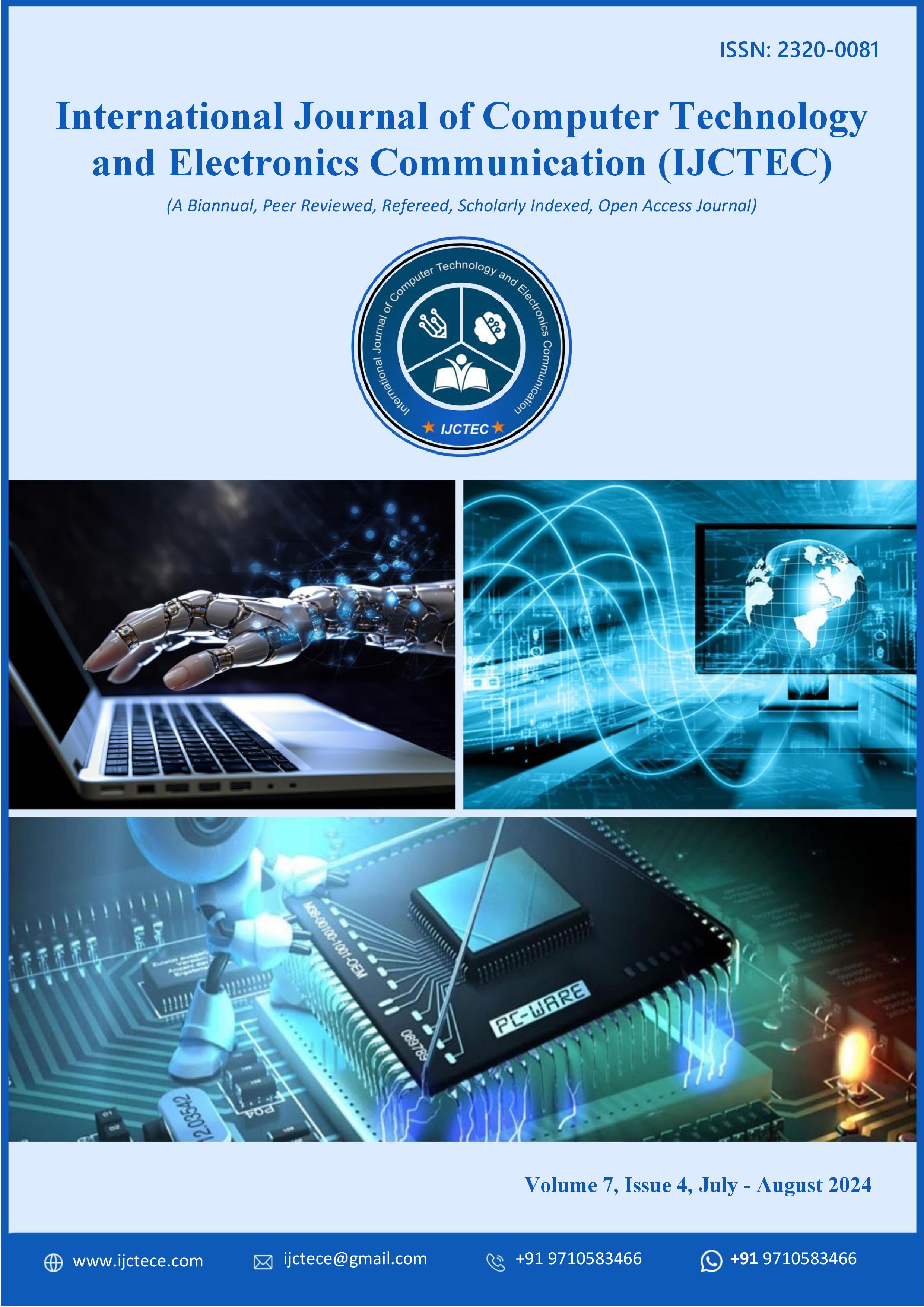Smart Connect Ecosystem Modernization through BERT Driven Deep Neural Models: A Comparative Analysis for Sustainable IT Operations and Data Governance
DOI:
https://doi.org/10.15680/IJCTECE.2024.0704004Keywords:
Smart Connect Ecosystem, BERT, Deep Neural Models, Sustainable IT Operations, Data Governance, Log Anomaly Detection, Domain Specific Models, InterpretabilityAbstract
Smart connect ecosystems—complex interlinked IT infrastructures combining applications, services, devices, and data flows—pose ever‑increasing challenges in sustainable operations, resilience, and governance. Modernizing these ecosystems often involves adopting advanced machine learning (ML) or deep neural models to enhance automation, scalability, and intelligence. This paper presents a comparative analysis of BERT‑driven deep neural models applied to ecosystem modernization, with special attention to sustainable IT operations and data governance. We explore how BERT (Bidirectional Encoder Representations from Transformers) can be used in tasks such as log anomaly detection, data flow classification, policy compliance, entity extraction for governance, and risk prediction. The study compares BERT variants, fine‑tuned BERT, domain‑specific BERT, and lightweight transformer models, in terms of accuracy, computational cost, interpretability, and governance compatibility. Using datasets drawn from real IT logs, data governance policies, configuration files, and user feedback, we evaluate model performance and sustainable operation metrics such as energy consumption, latency, robustness to drift, and transparency. Results show that domain‑adapted BERT fine‑tuned for operations tasks outperforms generic models in detection & classification tasks, but incurs higher computational overhead which may impact sustainability metrics unless optimized. Moreover, interpretable model variants or hybrid architectures help improve governance alignment, though often at modest cost in accuracy. We derive lessons for maximizing sustainability and governance compliance: model choice must balance performance with resource usage; data governance requirements (privacy, auditability, bias) must be built into training and deployment; and continuous monitoring is critical given operational drift. Overall, BERT‑driven modernization offers significant promise for smart connect ecosystems if carefully managed; this comparative study provides guidance for practitioners and researchers seeking sustainable IT operations under strong governance regimes.
References
1. Bender, E. M., Gebru, T., McMillan Major, A., & Shmitchell, S. (2021). On the Dangers of Stochastic Parrots: Can Language Models Be Too Big? Proceedings of the 2021 ACM Conference on Fairness, Accountability, and Transparency, 610 623.
2. Sugumar, R., Rengarajan, A. & Jayakumar, C. Trust based authentication technique for cluster based vehicular ad hoc networks (VANET). Wireless Netw 24, 373–382 (2018). https://doi.org/10.1007/s11276-016-1336-6
3. Nallamothu, T. K. (2023). Enhance Cross-Device Experiences Using Smart Connect Ecosystem. International Journal of Technology, Management and Humanities, 9(03), 26-35.
4. Chametzky, B., & Goldberg, Y. (2022). A Comparative Study of Domain Specific BERT Variants for Legal Text Classification. Journal of Legal Informatics, 14(2), 98 121.
5. Devlin, J., Chang, M. W., Lee, K., & Toutanova, K. (2019). BERT: Pre training of Deep Bidirectional Transformers for Language Understanding. Proceedings of NAACL HLT 2019, 4171 4186.
6. Du, M., Li, F., Zheng, G., & Srikumar, V. (2017). Deeplog: An Anomaly Detection Method for Sequenced Logs Using Deep Learning. In Proceedings of the 2017 ACM SIGSAC Conference on Computer and Communications Security (pp. 1285 1298).
7. Amuda, K. K., Kumbum, P. K., Adari, V. K., Chunduru, V. K., & Gonepally, S. (2021). Performance evaluation of wireless sensor networks using the wireless power management method. Journal of Computer Science Applications and Information Technology, 6(1), 1–9.
8. Venkata Ramana Reddy Bussu,, Sankar, Thambireddy, & Balamuralikrishnan Anbalagan. (2023). EVALUATING THE FINANCIAL VALUE OF RISE WITH SAP: TCO OPTIMIZATION AND ROI REALIZATION IN CLOUD ERP MIGRATION. International Journal of Engineering Technology Research & Management (IJETRM), 07(12), 446–457. https://doi.org/10.5281/zenodo.15725423
9. Hacking, C., Rodriguez, M., & Treude, C. (2020). Policy Document Classification Using Transformer Models. Journal of Enterprise Information Management, 33(5), 985 1002.
10. Pimpale, S. Comparative Analysis of Hydrogen Fuel Cell Vehicle Powertrain with Battery Electric, Hybrid, and Gasoline Vehicles.
11. Huang, L., Fan, H., Song, X., & Wang, Y. (2021). Transformer vs. RNN for Log Anomaly Detection: Accuracy and Efficiency Trade offs. International Journal of Network Management, 31(4), e2123.
12. Jain, S., & Wallace, B. C. (2019). Attention Is Not Explanation. Proceedings of the 2019 NAACL HLT, 3543 3556.
13. Kim, J., Park, S., & Lee, T. (2022). Applying BERT for Log Anomaly Detection in Smart Manufacturing Systems. IEEE Transactions on Industrial Informatics, 18(6), 3901 3910.
14. Li, Y., & Chen, X. (2022). Domain Adapted BERT for IT Operations: Enhancing Performance on Log Data. Proceedings of the 2022 ACM Symposium on Cloud Computing, 456 468.
15. Liu, Y., Ott, M., Goyal, N., Du, J., Joshi, M., Chen, D., … & Stoyanov, V. (2020). RoBERTa: A Robustly Optimized BERT Pretraining Approach. arXiv preprint arXiv:1907.11692.
16. Shaffi, S. M. (2022). Enterprise Content Management and Data Governance Policies and Procedures Manual. International Journal of Science and Research (IJSR), 11(8), 1570–1576. https://doi.org/10.21275/sr220811091304
17. Rajendran, Sugumar (2023). Privacy preserving data mining using hiding maximum utility item first algorithm by means of grey wolf optimisation algorithm. Int. J. Business Intell. Data Mining 10 (2):1-20.
18. Narapareddy, V. S. R., & Yerramilli, S. K. (2021). SUSTAINABLE IT OPERATION SYSTEM. International Journal of Engineering Technology Research & Management (IJETRM), 5(10), 147- 155.
19. Sanh, V., Debut, L., Chaumond, J., & Wolf, T. (2019). DistilBERT, a distilled version of BERT: smaller, faster, cheaper and lighter. Proceedings of the 5th Workshop on Energy Efficient Machine Learning and Cognitive Computing, 1 6.
20. Sahaj Gandhi, Behrooz Mansouri, Ricardo Campos, and Adam Jatowt. 2020. Event-related query classification with deep neural networks. In Companion Proceedings of the 29th International Conference on the World Wide Web. 324–330.
21. Azmi, S. K. (2021). Delaunay Triangulation for Dynamic Firewall Rule Optimization in Software-Defined Networks. Well Testing Journal, 30(1), 155-169.
22. Schwartz, R., Dodge, J., Smith, N., & Etzioni, O. (2019). Green AI. Communications of the ACM, 63(12), 54 63.
23. Strubell, E., Ganesh, A., & McCallum, A. (2019). Energy and Policy Considerations for Deep Learning in NLP. Proceedings of the 57th Annual Meeting of the Association for Computational Linguistics, 3645 3650.
24. Wang, H., Li, S., Xu, J., & Zhao, Y. (2021). Configuration File Entity Extraction with Transformer based Models. Conference on Computational Linguistics & Intelligent Systems, 5(1), 78 95.


